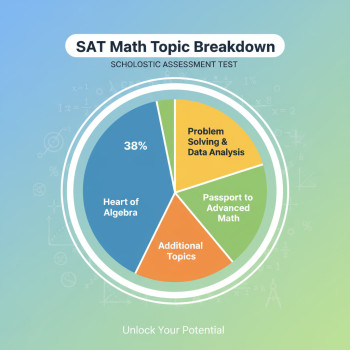How to Prepare for the SAT While Taking Multiple AP Exams
If youre sitting through an AP Chemistry lab in the morning and a lit circle about The Great Gatsby in the afternoon, and then trying to squeeze SAT practice into the evening, you arent alone — and youre not doomed either. Balancing SAT preparation with multiple AP exams is a common challenge for ambitious students. With a clear plan, smart time management, and some realistic expectations, you can do well on both.
Why this balancing act feels so hard (but is totally doable)
AP classes are deep dives into specific subjects; they demand long-term projects, labs, essays, and dense concept mastery. The SAT, by contrast, is a general skills test that rewards pattern recognition, reading stamina, and efficient problem solving. The clash comes down to timing and cognitive load. APs ask you to hold lots of specific content in active memory. The SAT asks you to switch quickly among verbal reasoning, grammar, and math. Trying to learn large amounts of AP content at the same time you want to refine SAT strategies can feel like patting your head and rubbing your stomach.
Good news: the overlap is larger than it looks. AP classes strengthen reading comprehension, argument analysis, and quantitative reasoning — all of which support SAT performance. If you align what youre learning in AP classes with SAT study goals, you can make both work for you.
Start with honest goals and a reality check
Before you create a plan, ask three practical questions:
- When are your AP exams and when is your SAT test date? Map these on a calendar.
- Which APs are you taking and how demanding are they? A lab-heavy AP like Biology may require different daily time blocks than AP US History.
- What is a realistic SAT score target for the colleges you care about? Use that to set study intensity.
Once you answer these, build a timeline that prioritizes immediate deadlines. If AP exams are two weeks away, your calendar will look different than if the SAT is the next big milestone.
Designing a flexible study roadmap
Flexibility is the biggest asset for students with packed schedules. Your roadmap should have blocks for: focused AP work, SAT skill-building, and integrated review sessions where both overlap. A 12-week window gives you enough time to improve meaningfully on the SAT while honoring AP responsibilities.
| Weeks Before SAT/APs | Main Focus | Weekly Time Estimate | Goal |
|---|---|---|---|
| 12-9 weeks | Skill-building (SAT fundamentals) and steady AP preparation | 6-8 hours SAT, 8-12 hours AP | Establish baseline; identify major weaknesses |
| 8-5 weeks | Practice tests; targeted AP review | 8-10 hours SAT, 10-15 hours AP | Increase stamina; address pattern errors |
| 4-2 weeks | Polish weak areas; intensive AP review | 5-8 hours SAT, 15-20 hours AP | Solidify knowledge; maintain practice test cadence |
| 1 week | Light review; mental preparation | 2-4 hours SAT, variable AP | Reduce stress; sharpen pacing |
This table is a flexible template, not a rigid prescription. If an AP exam is earlier, slide study emphasis accordingly. If your SAT is earlier, prioritize its practice tests sooner. The point is to balance, not to do everything at once.
Weekly micro-schedule: what a balanced week looks like
Pick two or three non-negotiable time blocks each week and protect them. For most students, these blocks are: a long practice test or simulated exam, two focused SAT sessions for targeted skills, and three AP-focused study sessions. Here is an example week:
- Monday evening: 60 minutes SAT – grammar and sentence structure review
- Tuesday afternoon: 90 minutes AP Chemistry lab write-ups and content review
- Wednesday evening: 90 minutes SAT – problem sets for algebra/geometry
- Thursday: school day AP work + 45 minutes flashcard review
- Saturday morning: full practice SAT section or half test, timed
- Sunday: 2-3 hours of AP review and practice FRQs
Notice how SAT practice sessions are short but consistent. Small, focused blocks beat occasional marathon studying when youre managing many classes.

Make your SAT study efficient: quality over quantity
You dont need 15 hours a week of SAT study to gain points — you need smart study. That means:
- Focus on patterns instead of isolated problems. If you consistently miss inference questions in Reading, train specifically on inference strategies.
- Use short, intense practice intervals (25-45 minutes) with targeted goals, followed by short breaks.
- Review mistakes carefully. The fastest way to improve is to learn why you missed an item and practice similar questions.
For Reading and Writing, prioritize active reading strategies, understanding argument structure, and common grammar rules. For Math, drill foundational algebra and geometry, then time yourself on mixed problem sets.
How to integrate AP study with SAT prep
Instead of seeing APs and the SAT as separate beasts, use them as allies. Here are practical ways to combine them:
- Turn AP readings into SAT reading practice. Long AP passages are great stamina training; use them to practice main idea and evidence questions.
- Use AP math and physics problems to deepen conceptual understanding that helps with SAT problem solving; then practice faster, simpler SAT-style questions to build pacing.
- For AP essays, focus on clear thesis statements and evidence use; that skill translates into stronger rhetorical analysis on SAT Reading passages and can improve time management when crafting quick outlines.
Example: while studying for AP Biology, summarize dense paragraphs in 2-3 sentences. That practice improves how quickly you extract main ideas, which is directly useful for SAT Reading.
Targeted SAT techniques by section
Reading
Strategy: prioritize passage mapping and evidence tracking. Break passages into manageable chunks and write a one-line summary for each paragraph. When a question asks ‘which choice best supports’, return to your summary rather than rereading the whole paragraph.
Practice tip: do 2-3 targeted passages per week under timed conditions, then spend 30 minutes reviewing wrong answers and noting patterns (tone misreadings, inference errors, misinterpreting pronouns).
Writing and Language
Strategy: memorize a short list of high-frequency grammar rules and sentence-structure strategies. Most mistakes on this section come from common issues: subject-verb agreement, parallelism, punctuation, and word choice. Learn to scan sentences for the relevant rule instead of reading every answer fully.
Practice tip: use sentence-level drills after AP classes when your grammar knowledge is fresh. AP English classes are a goldmine for understanding rhetorical intent and choices.
Math
Strategy: reinforce core algebra skills and learn efficient problem selection. The SAT rewards speed and method selection — sometimes a clever algebraic rearrangement or plugging in answer choices is faster than brute force.
Practice tip: separate your practice into two buckets: concept drills (no timer) and mixed timed sets. Concept drills build accuracy. Timed sets build pacing and test endurance.
Practice tests: the backbone of improvement
Full-length practice tests do more than measure progress. They build mental stamina, reveal pacing problems, and give you a realistic test experience. Schedule one full practice test every 7-10 days during the middle phase of your study plan. After each test, do an in-depth error log. Identify:
- Recurring content weaknesses.
- Questions lost to silly mistakes or timing issues.
- Sections where you guessed frequently and why.
Use the error log to create a two-week mini-plan focused on the top three error types.
How to prioritize when AP deadlines collide with SAT practice
There will be weeks when an AP project or exam demands nearly all your focus. During these peaks, reduce SAT hours but keep quality high. Do 30-60 minutes of targeted SAT practice most days: review your error log, do one section under timed conditions, or drill 10 high-yield problems. Maintaining momentum is more important than a full reset.
If a major AP exam is within a week, go lighter on SAT practice and pivot to maintenance: quick reviews, light timed sections, and mental prep. After the AP, return to a steady practice schedule and expect a short recovery period.

When and how to get help: tutoring, teachers, and study groups
Not every student needs a private tutor, but most benefit from occasional expert guidance. If you struggle to identify patterns in your mistakes or to design a study plan that respects AP demands, targeted help can multiply your efficiency.
Sparkl’s personalized tutoring can fit naturally here: a few 1-on-1 sessions can clarify strategies, create a tailored study plan that accounts for AP timelines, and provide AI-driven insights into practice-test data so you know exactly where to focus. Expert tutors can also model pacing during simulated sections and help translate AP knowledge into SAT advantage.
Study groups work well for AP review, especially for free-response questions and lab reports. But for SAT improvement, short focused one-on-one feedback is often more time-effective: a tutor can point out subtle patterns you may miss in group work.
Stress management and sleep: exam prep essentials
High performance on test day is as much about calm focus as it is about content mastery. Commit to a sleep routine: aim for 7-9 hours, and avoid all-nighters before practice tests or the actual exam. Maintain brief daily exercise and incorporate mindfulness or breathing techniques to reduce anxiety.
On intense AP weeks, give yourself permission to step back from ambitious SAT goals and focus on balance. Doing so reduces burnout and preserves the motivation to resume studying at full strength.
Test-week checklist
- Two days before the SAT: finish content review; no new strategies.
- The day before: light timed practice, review a concise mistake list, and pack materials (admission ticket, ID, calculator with fresh batteries).
- Night before: early bedtime, light activity, and low-sugar dinner.
- Morning of: a familiar breakfast, a short warm-up (10-15 minutes of easy problems), and arrive early to the test center.
For AP exams, follow a similar approach: complete final review sheets, practice free response under timed conditions, and rest well the night before.
Real student example: how alignment saved time
Consider Maya, a junior taking AP US History, AP Calculus, and the SAT in spring. She used her APUSH readings as timed reading practice three times a week, extracting main ideas and writing two-sentence summaries. She used AP Calc problem sets one day a week to deepen concept mastery, then did SAT Math timed sets the next day to practice speed. By using AP work as practice for the SAT instead of a separate workload, Maya avoided one hour per day of duplicate effort and improved both AP FRQ scores and her SAT Math score by focusing on transfer skills.
Tracking progress: metrics that matter
Dont obsess over raw practice-test scores alone. Track these metrics for a clearer picture of improvement:
- Accuracy by question type (e.g., inference, algebraic manipulation).
- Average time per question in each section.
- Number of avoidable errors per test (minor slips, misreads).
- AP practice improvements, like percentage correct on past FRQs.
These measures help you adjust study time intelligently. If accuracy is steady but timing is slow, add targeted pacing drills. If timing is fine but accuracy is dropping, step back into content review.
Final thoughts: realistic expectations and long-term perspective
Balancing the SAT with multiple AP exams is a marathon with sprints inside it. You will have weeks of high intensity and weeks of maintenance. The most consistent students are those who schedule realistically, use AP work to reinforce SAT skills where possible, and ask for targeted help when they hit a plateau.
If youre thinking about tutoring, remember that occasional expert intervention can save hours and reduce stress. Sparkl’s personalized tutoring offers one-on-one guidance, tailored study plans, expert tutors, and AI-driven insights that can help you prioritize weak areas and make the most of limited time. When it fits naturally into your plan, a few focused sessions can provide clarity and confidence.
Above all, be kind to yourself. Ambition is admirable, but so is balance. With a clear roadmap, consistent practice, and a few strategic choices, you can walk into both AP exam rooms and the SAT test center ready to perform at your best.
Quick reference: do’s and don’ts
- Do align AP readings and problem sets with SAT practice for efficient study.
- Do take regular timed practice tests and do detailed error reviews.
- Do protect sleep and mental health during peak weeks.
- Dont cram SAT strategies the week before an AP exam; focus on maintenance.
- Dont ignore recurring small mistakes; they cost more points than rare big errors.
Good luck — you can absolutely manage SAT prep while taking multiple AP exams. With focus, strategy, and the occasional dose of expert help, youll be surprised at how well you can do on both fronts.













No Comments
Leave a comment Cancel